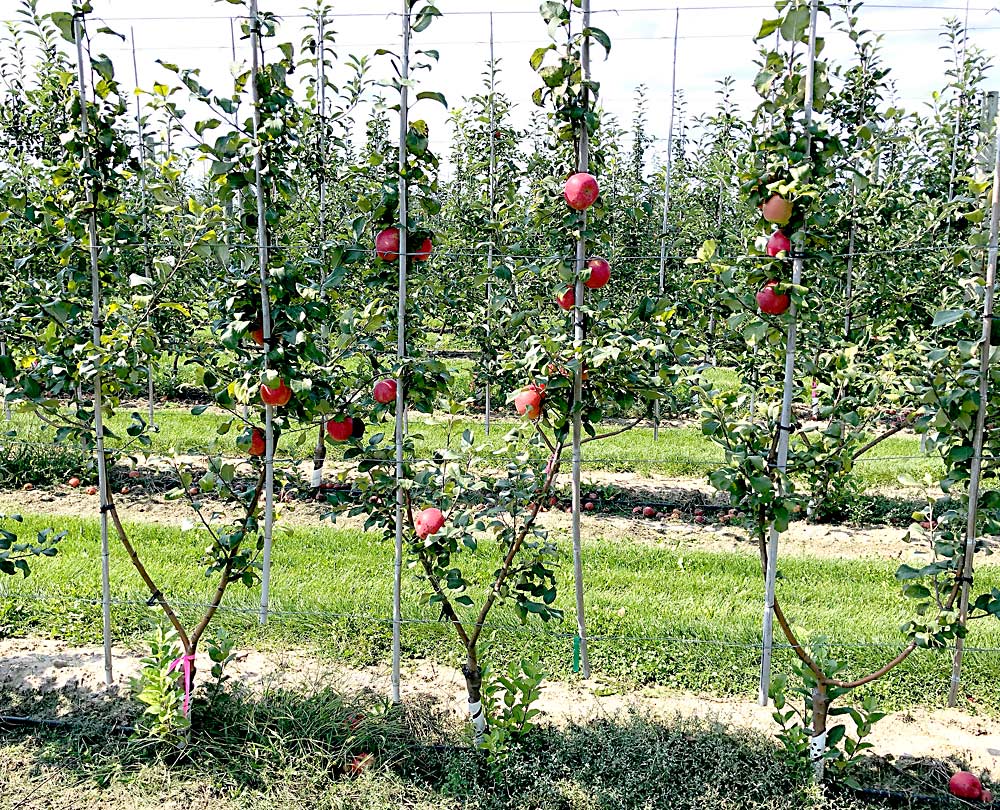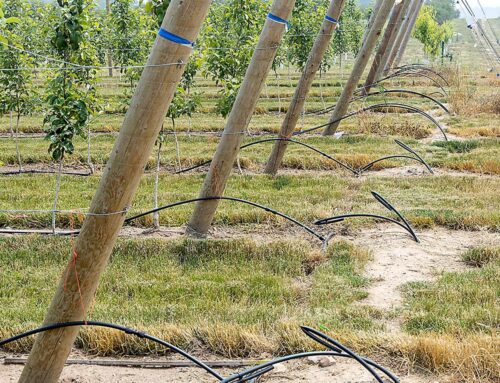
In this two-leader system, these fourth-leaf Honeycrisp trees were created by selecting two side shoots from above the bench graft, or winter graft, on each. They were grafted in the winter, then planted in place in the spring. (Courtesy Phil Schwallier/Michigan State University)
Apple growers may be thinking about trying high-density systems in their orchards, but they aren’t finding multileader trees among the regular commercial nursery stock, according to Michigan State University tree fruit educator Phil Schwallier.
The big reason is cost. Multileader trees are more expensive to grow and nurseries charge a premium for them, but most growers balk at the higher per-tree price, he said. That is despite the fact that two-leader systems require half the number of trees per acre compared to single-leader systems, and three-leader systems require only a third, he noted.
Some growers, especially large orchard operations, have begun contracting with nurseries to grow multileader trees. “If you do, however, the nursery is going to want you to take all of them, so you get some good ones and you get some bad ones,” Schwallier said.
“Beyond that, you get a pretty good charge with them, typically $3 more per tree or maybe even $4 per tree. Again, typical growers tend to not want to pay the price, so they back off.”
So what’s the average grower to do? More often they are turning to bench grafting their trees.
“The trend for this is growing, and I think that’s because we’re getting our densities so high and planting our trees so close that our orchard spacings are not much different from the spacings in a nursery,” he said. “That means growers can bench graft a tree and plant it ‘right in place’ into the orchard.”
To do direct planting well, the grower needs to get those tiny, bench-grafted trees onto a trellis and an irrigation system immediately, Schwallier said.
“You need to take extremely good care of these trees, because they are very susceptible to things like injury from machinery and herbicides, and from winter injury,” he said. On the other hand, direct planting eliminates nursery shock and growth delays.
Schwallier estimated that about 10 percent of growers are bench grafting, and most of them are buying rootstock and hiring someone to come to the farm and graft it to scion there. That’s up from about 4 to 5 percent a decade ago, he said.
“Of those who are bench grafting, most are just experimenting at this point, perhaps bench grafting 30 percent of their trees.” As more growers see the value of high-density orchards, he added, “I think those numbers will only grow.”
—by Leslie Mertz
Related: Multileader trees leading the way






Leave A Comment